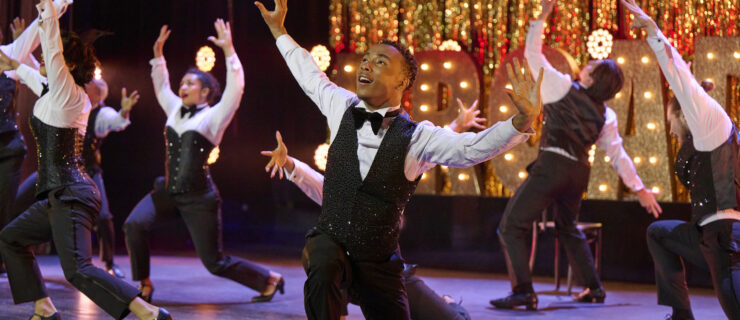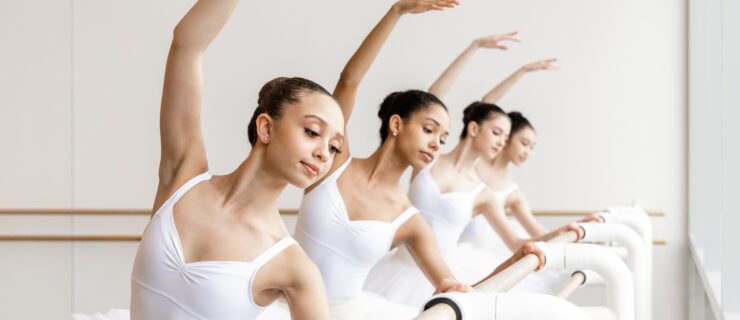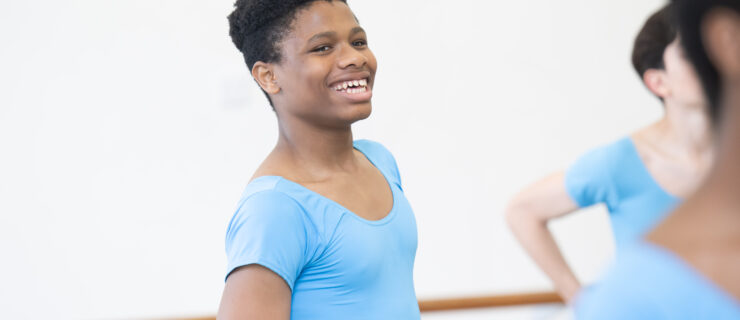Give Me A Break
How bad would an ulcer have to get before you stayed home from class? If you’re like former Ailey School student Miriam Akhavan-Tafti—who, at the height of her burnout sipped from a bottle of Maalox between barre exercises—you’d have to be on your deathbed. Not only did Akhavan-Tafti drag herself to class with a severe ulcer, but no matter how much sleep she got, she woke up exhausted. “I started stress eating, because I was so tired,” she says. “I was starting to gain weight and I got a lot more negative. Sometimes I would be so miserable right before class that I’d have to force myself to go.”
Type A personalities (high achievers who tend to overcommit themselves) are at especially high risk for burnout, a condition characterized by pushing yourself through exhaustion, physical pain and feeling emotionally crummy, which can make you negative, catty and depressed. This kind of self-mutilation could result in injury and—possibly even worse—a complete disdain for dance.
Recovery from burnout involves therapy, rest and lots of time, which is why prevention is much easier on your psyche. “Treating burnout is a nightmare,” says Dr. Aynsley Smith, PhD, of the Sports Medicine Center at the Mayo Clinic in Rochester, MN. After all, burnout is more than just over-training; it’s both a physical and psychological condition.
Full-blown burnout robs you of motivation, energy and happiness. Your heart rate goes through the roof and your muscles lose glycogen. Early signs of burnout include not enjoying dancing, tension, depression, frustration at not improving, anger, fatigue, a general out-of-whack feeling, an inability to bounce back like you used to and forgetfulness or confusion. If you start to feel this way, take one or two days away from dancing and the studio—a tough concept to grasp, especially if you’re used to pushing yourself or taking more classes when you feel like you aren’t improving fast enough.
Linda Hamilton, a psychologist who treats many performing artists, had one client who took an entire summer off from dancing. When she returned in the fall, her teachers said her dancing was stronger than ever. Not only did she feel newly inspired from spending time at the beach with her friends, but her body actually became healthier. This is partly because every time you work out you’re actually putting tiny tears in your muscle fibers, and it’s only after they heal that they become stronger.
With Hamilton’s help, 20-year-old Akhavan-Tafti has been able to overcome her burnout. She’s currently studying at various studios in NYC, and was invited to take open classes with the Bill T. Jones/Arnie Zane Dance Company. “A lot of my treatment has been learning how to take a step back,” says Akhavan-Tafti. “As much as I want to get five PhDs and be part of the New York City Ballet, sometimes it’s healthier to do less.”
10 Ways To Beat Burnout:
- During days of rest, nurture yourself. Get a massage, sit in a hot tub or sauna, go for acupuncture and have some fun. “That doesn’t mean staying up and dancing until six in the morning at a club,” Hamilton advises. “Sit down and have dinner with your friends.”
- Avoid shocking your body by jumping from one or two classes a week into an intensive situation where you’re dancing all day, or where you’re trying to dance yourself into shape.
- Maintain a workout regimen with lots of variety to stay mentally stimulated and to increase the probability of success.
- Engage in other activities you enjoy. “Having other interests can be really refreshing,” Hamilton says, “especially if you’ve had a bad class and it takes your mind off of dancing. You’ll go back more refreshed.”
- Maximize the quality of your experience by visualizing moves instead of repeating them over and over again. This tactic reduces the amount of energy burned and reduces the chance of injury due to overuse and fatigue.
- Don’t be so hard on yourself and try to be less goal-oriented. “If there was such a thing as being perfect it would be a category in the Guinness Book of World Records,” says Hamilton. “It doesn’t exist.”
- See a professional dance performance. LeAnn Haggard, National Dance Association’s 2006 National Dance Educator of the Year, suggests that watching a company will re-inspire your love of dance.
- Take a dance workshop. “Sometimes burnout can be remedied by going to a dance workshop and thinking, ‘My technique is really good!’ That’s enough to perk you up again,” Haggard says. “Other times being next to people who love dance rekindles the spirit inside.”
- Switch studios. “This one is touchy, but we shop for everything else,” says Haggard. “You may be burned out because your studio is not meeting your needs anymore.”
- Evaluate your commitment to dance. “If you’re burning out, you might need a new venue for dance,” says Haggard. “Maybe you should audition for the dance team at your high school, which will allow you to continue dancing at a lesser intensity than at your studio.”



